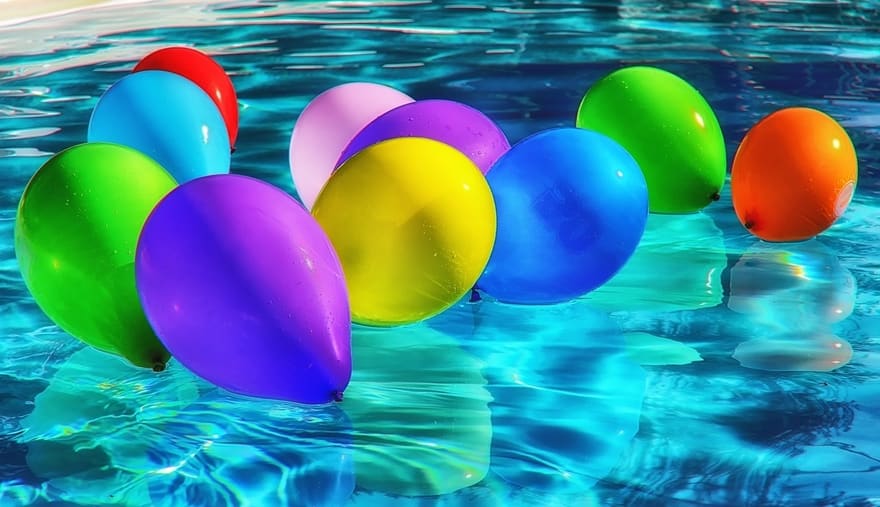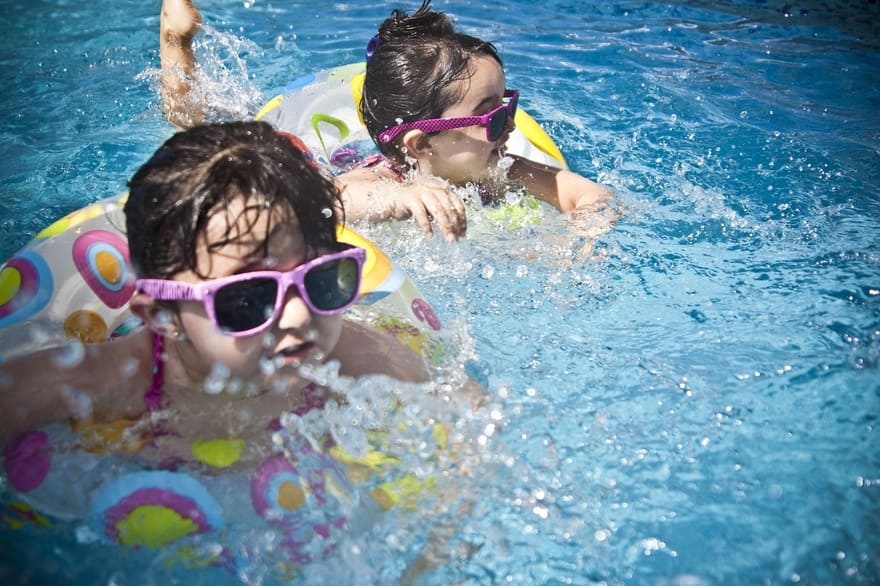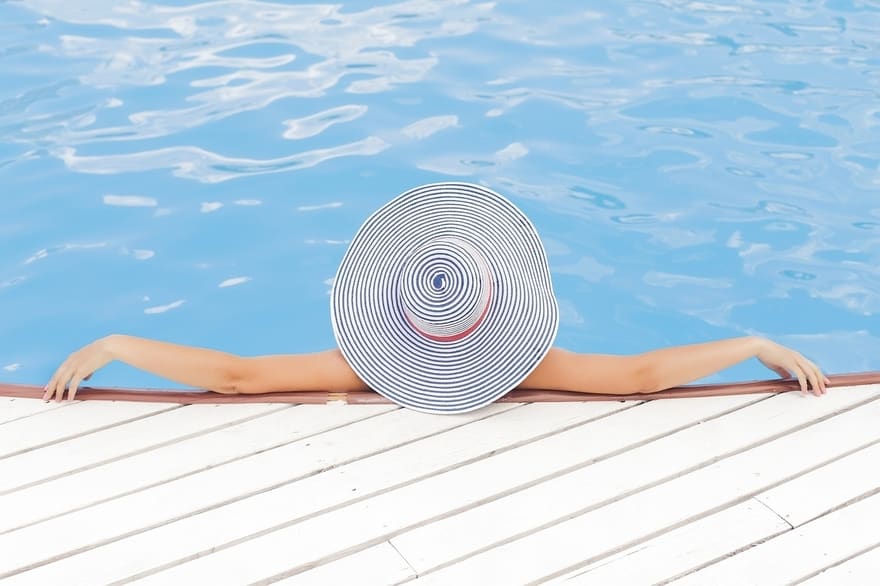
Maintaining a clean and well-balanced swimming pool is essential for both the health of the pool and the safety of its clients. Pool shock, or pool shock treatment, is a typical technique used to eliminate contaminants and guarantee that the water remains clear and safe. However, it’s crucial to know when it’s safe to swim in a pool after it has been shocked.
In this article, we will investigate the factors influencing pool shock, After How Long You Shock a Swimming Pool it’s Safe to Swim, and how long to leave shock in pool before it’s safe to swim.

Shock a Swimming Pool: Understanding the Treatment
Pool shock, or pool shock treatment, is the most common way of adding a concentrated chemical sanitizer to a swimming pool. The primary reason to use shock in pool is to increase the levels of free chlorine in the water rapidly. This abrupt flood in chlorine levels assists with eliminating harmful microorganisms, bacteria, algae, and organic contaminants, making the pool water safe and clean.
What Happens If You Swim in a Shocked Pool?
When you shock a swimming pool, it isn’t safe to get on your swimming costume immediately and make a dip as it can have several negative outcomes. You need to know How long to leave shock in pool! Below are incidents that can happen If You Swim in a Shocked Pool?

Skin and Eye Irritation:
High chlorine levels can cause skin and eye irritation, which can be an unpleasant and uncomfortable experience for swimmers. At the point when chlorine levels in the pool water are elevated due to shock, it can result in red, irritated skin, a burning sensation in the eyes, and a general feeling of distress. Swimmers, particularly those with sensitive skin, could find this condition exceptionally bothersome. The chlorine, while essential for disinfection, can strip the skin of its natural oils, leading to dryness and irritation.
Respiratory Issues:
Inhaling chloramine exhaust, which is created when chlorine reacts with organic matter in the water, can lead to respiratory issues. This is especially concerning for individuals with pre-existing respiratory conditions like asthma. Chloramines are a gathering of chemicals that structure when chlorine combines with sweat, urine, and other organic materials carried into the pool by swimmers. In shocked pools, these chloramines can reach elevated levels, resulting in a noticeable and frequently irritating odor. For asthmatics or those with sensitive airways, inhaling this exhaust can set off coughing, wheezing, and windedness.

Bleached Hair and Swimsuits:
Prolonged exposure to high chlorine levels can have an undesirable impact on personal belongings as well. Chlorine is a powerful bleaching agent, and when swimmers regularly uncover their hair and swimsuits in a pool with elevated chlorine levels, it can lead to bleached hair and stained swimsuits. While this may not represent an immediate health risk, it very well may be an inconvenience and potentially result in added costs for replacing swimwear and hair treatments.
Unpleasant Odor:
Shocked pools frequently radiate areas of strength for an odor, which can be both unpleasant and uncomfortable for pool-goers. The overpowering fragrance can linger in the air around the pool area, making the atmosphere less enjoyable. Swimmers and poolside spectators may find the odor troublesome to their relaxation and recreation. Additionally, the smell may cling to clothing and personal things, requiring extra work to dispose of.

Allergic Reactions:
Now and again, individuals may experience allergic reactions or increased aversion to chlorine, which can lead to more serious skin and eye issues. Allergic reactions to chlorine can manifest as hives, rashes, and even rankles on the skin. The eyes may turn out to be seriously bloodshot, watery, and swollen, causing considerable uneasiness. These allergic reactions are relatively rare, yet for allergic people, swimming in a pool with high chlorine levels can be a distressing and potentially harmful experience.
How Long to Leave Shock in the Pool?
The suggested waiting time before swimming in a pool that has been shocked relies upon several factors, including the type of shock utilized, the specific product’s instructions, and the size and volume of the pool. Here are a few general guidelines:
Check the Product Instructions:
Different pool shock products have varying instructions regarding when it is safe to swim. Always read and follow the guidelines given on the product label. The importance of adhering to these instructions cannot be overstated. Manufacturers formulate pool shock treatments with specific chemical compositions and concentrations, and they have a precise understanding of how these chemicals interact with pool water. Following their guidelines guarantees the safety of swimmers as well as the viability of the shock treatment.

Consider Shock Type:
There are two primary types of pool shock: calcium hypochlorite and sodium hypochlorite. The decision of shock type significantly influences the waiting period before it is safe to swim. Calcium hypochlorite shock typically requires a waiting period of about 8-24 hours before swimming. This lengthy waiting time is because of the more slow release of chlorine and the higher concentration of the chemical.
In contrast, sodium hypochlorite shock is known for its faster action and maybe just a short time before swimming. The decision between these two shock types ought to rely upon the specific necessities of your pool, the availability of chemical products, and the ideal turnaround time for pool usability.
Test the Water:
It’s essential to regularly test your pool water to guarantee that the chlorine levels have gotten back to a safe range. A chlorine test kit can assist you with determining when it’s safe to swim. Reliable water testing is a proactive measure that assists you with making an informed choice about pool safety. Whenever you’ve waited for the suggested duration, utilize a chlorine test kit to check the chlorine levels in the pool. Guarantee that the free chlorine levels have fallen within the acceptable range, which typically falls between 1.0 to 3.0 parts per million (ppm) for safe swimming.
Circulation and Filtration:
Running the pool’s circulation and filtration framework can help distribute the shock treatment uniformly all through the water, aiding in a speedier recuperation time. Proper circulation and filtration are vital parts of expediting the recuperation cycle after a pool shock. At the point when the pool’s circulation and filtration frameworks are actively working, they assist with distributing the chemicals uniformly all through the water.
Video How Long to Leave Shock in Pool
Conclusion:
In conclusion, the safety of swimming in a pool after shock is a crucial consideration for ensuring a healthy and enjoyable experience. Pool shock treatment is an effective means to sanitize and cleanse pool water. Still, immediate swimming post-treatment poses risks such as skin and eye irritation, respiratory issues, bleaching of personal belongings, unpleasant odors, and potential allergic reactions. Factors such as the type of shock used, manufacturer instructions, and water testing influence the recommended waiting period before swimming. Adhering to product guidelines, testing water quality, and facilitating proper circulation and filtration aids in determining when it is safe to swim after a pool has been shocked. Understanding these aspects is essential for maintaining a safe and enjoyable swimming environment.
